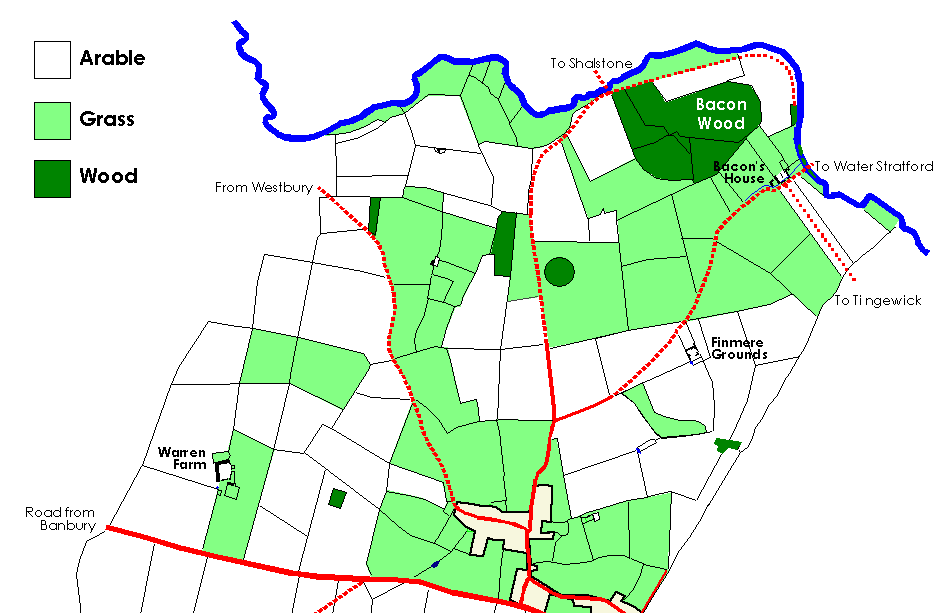
Bacons Wood
Bacons [or Bacon's or Bacon] wood stood in the north of the parish. It was important for game as well as timber, though some years there was a shortage of birds:
Do you remember a little wood at Finmere called Bacon’s wood when three years ago one might as easily have looked for an Elephant as a pheasant? In that wood I yesterday saw between 3 and 400 pheasants and hares & rabbits innumerable. Four guns killed 165 head of game in five hours. (Duke of Buckingham to William Fremantle; 1 February 1824; BRO D-FR/46/11/91)
The game was slaughtered and the wood felled for the Buckinghamshire Railway, which opened in 1850; its timber was probably used in construction of the railway. This event was described by Charles White in his epic poem on the building of the railway:
The Buckinghamshire Railway: The road and the rail and steam and the sail.
Now to describe the great Bucks Line,
I think I’ll have a try,
And tell you how the work went on,
Through hills both hard and high…
At the entrance of the County
On Oxfordshire’s north side
We first encounter Bacon Hill
A cutting deep and wide
Twas Bacon’s Wood, a place of note,
A favourite game preserve;
But the game was kill’d, the wood was fell’d
The Company for to serve
Then the Surveyor he came forth,
With a quick discerning eye,—
He drew his chain—the Act was pass’d—
Then the land they did buy;
The Timber-merchant then stepp’d in,
And fell’d the noble oak;
Both elm and ash, and lime and beech,
Soon felt the Woodman’s stroke.
This work was done with quick dispatch;
Soon all was clear’d away,—
The brush, the timber and the roots,
Was gone without delay.
Then the Surveyor next began
His level for to gain;
Wallace, he did the contract take,
And rent the rocks in twain…
Extract from a private memoir published by Charles Whitehall of Gawcott, 1849.
Bacon Wood on the 1840 Tithe Map
